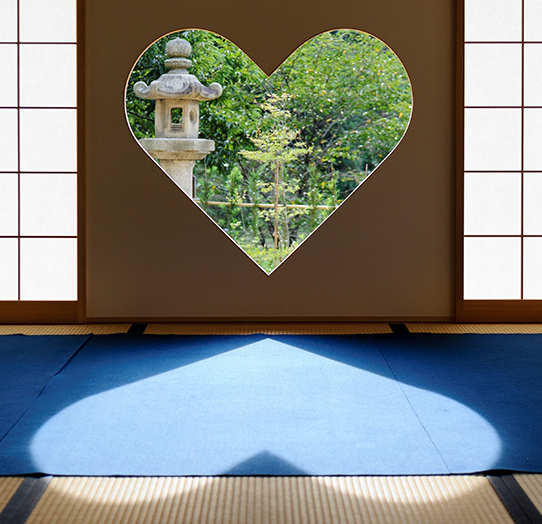
the Inome-Window at Shojuin Buddhist temple in Kyoto
The Shojuin Buddhist temple, which is roughly an hour drive from central Kyoto, is home to one of Japan’s most popular windows. Unlike Genko-an temple, where the round “Window of Enlightenment” and the square “Window of Confusion” offers a manifestation of Buddhist teachings, visitors don’t flock to Shojuin for enlightenment. Rather, they go in search of love. Well, not exactly.
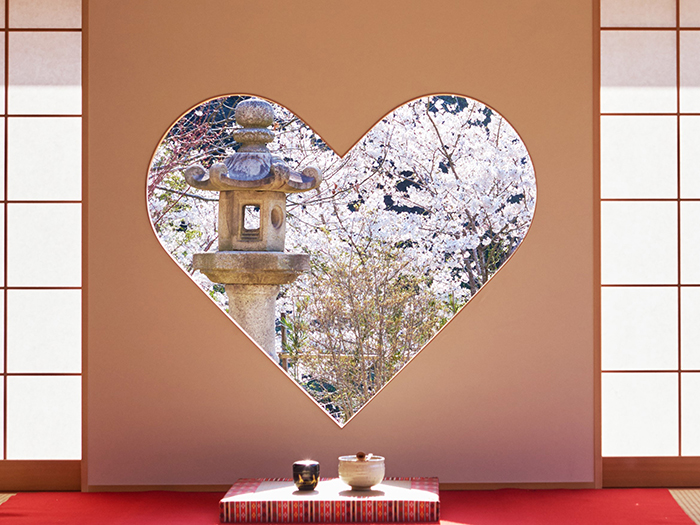
Shojuin Temple’s Inome-Window in the Spring
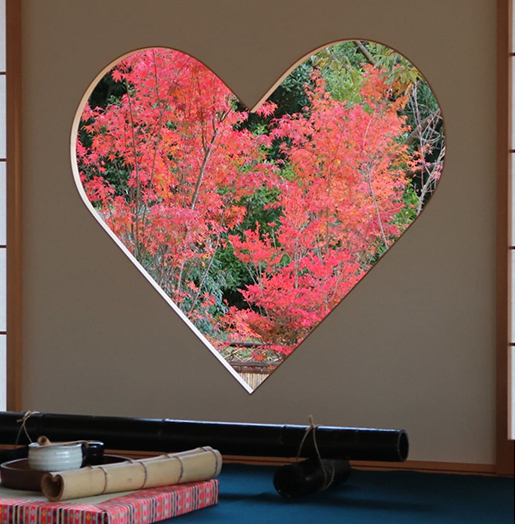
Shojuin Temple’s Inome-Window in the Fall
In the guest room of Shojuin Temple is a ❤-shaped window that beautifully frames the outdoor scenery whether it’s the cherry blossoms of spring or the foliage of fall. And throughout the day a “heart-shaped” beam of sunlight moves across the floor. It’s seemingly the ideal spot to feel the love. Except it has nothing to do with love or hearts in the way we’ve come to associate the symbol with. The Inome-Window is modeled after the “inome” (猪目) symbol and literally means “boar’s eye.” It’s thought to have originated from the shape of a the eye of a wild boar and has been around for over 1400 years in Japan. It’s used as a decorative symbol that’s often carved into temples and weapons like spearheads and the hand guards of swords.
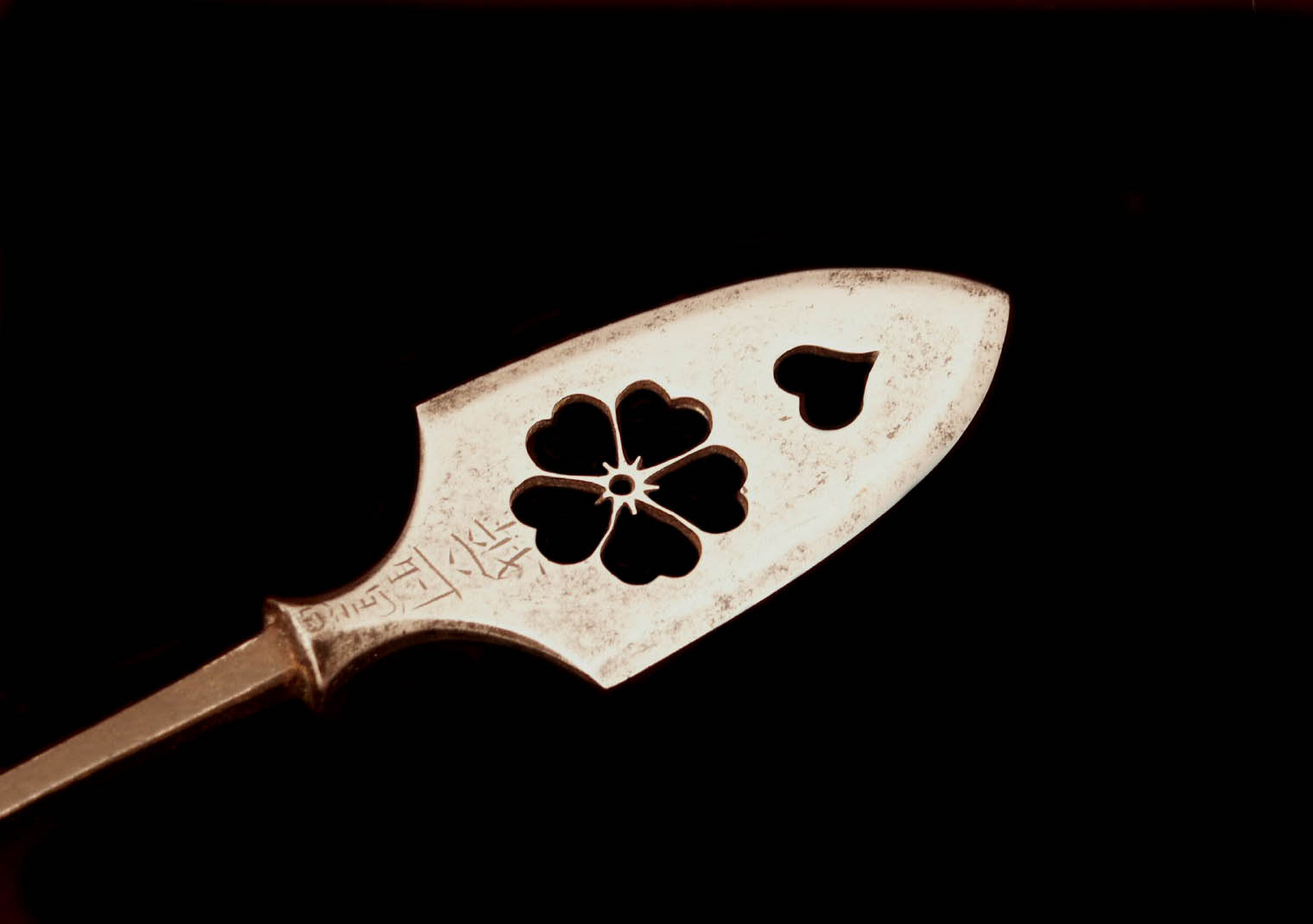
a Japanese arrowhead with the Inome design, dating back to the 1600s – 1800s (from the Higgins Collection)

A collection of examples of the Inome symbol used as a decorative motif in temple architecture (from Hasedera Temple). The next time you’re at a temple, look around and you just might spot one.
The boar, and people born during the zodiac year of the boar, are associated with traits of determination, honesty and straightforwardness. As the story goes, these characteristics were derived from the way a boar charges directly at its target without ever wavering or glancing away. It’s easy to see how this was adopted into samurai philosophy and fighting, hence the symbol being incorporated into weaponry. But over time the symbol has taken on a more benign association and is thought to ward off misfortune and attract good luck. And temple owners at Shojuin welcome visitors to interpret the symbol any way they choose.
Perhaps the temple was destined to feel the love. After all, even the Ujitawara town where the temple is located is peculiarly shaped like a hear— I mean, Inome.
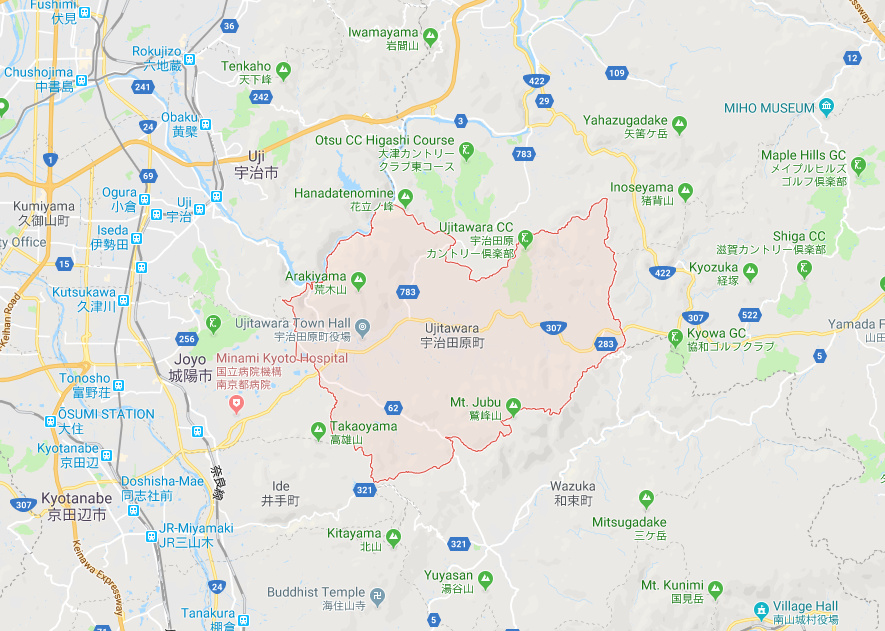
Ujitawara town where the Shojuin Temple is located is peculiarly shaped like a ❤ (Google map link)
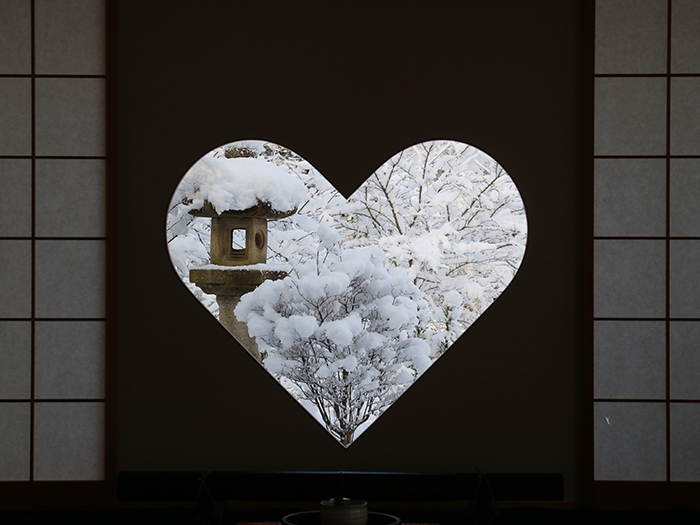


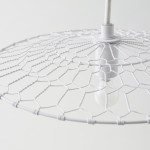
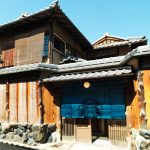
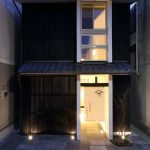
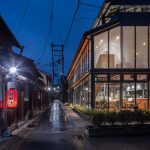


















May 1, 2018 at 2:38 pm
I was about to remark that applying the story to the window of Shojuin Temple was probably bogus, because if it were correct, the window should be flipped, otherwise the symbol would be upside down and surely not propitious. Then I realized that the image cast by the window, the image that moves throughout the room as the sun passes overhead, would be of the inome in its correct orientation…genius!